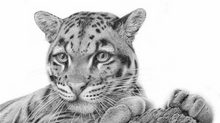It’s time to get excited by our native wildlife
- Jon Isaacs
- Jul 23, 2021
- 4 min read
Updated: Jan 13, 2023
By Jon Isaacs
One of the most frustrating things about two years of the coronavirus pandemic is that it has stopped many of us from going abroad. I’ve been lucky enough in the last thirty years to spend my yearly holiday somewhere in the world viewing and photographing wildlife. Along the way, I’ve seen some incredible creatures and sights and picked up a reasonable amount of natural history knowledge from experts in the field. Even seeing such an every day event as a zebra crossing a dusty track at the moment seems like an event to be savoured. Hopefully, it won’t be too long before we can again go in pursuit of exotic creatures that are on our individual bucket lists, because none of us are getting any younger and the countries containing the creatures desperately need our economic support.

On the positive side, we now have time to study our own native wildlife. For years I’ve kept an annual bird list of what I’ve seen. With the advent of “Lockdown” and more time for local walking, I’ve pushed my yearly score that little bit higher. I’m no twitcher, but I’ve learnt more about species and seen more first sightings than ever before. I’ve even started to keep a mammal list. At the moment it’s pretty pathetic for this year, comprising just nine species, but seeing a weasel hunting got me nearly as excited as watching a cheetah chasing down a gazelle.
Such a sight made me realize that after seventy-plus years, I probably know a lot less, and have seen a lot fewer, of our over 200 native mammals than the African mammals I’ve experienced. I notice that my regular wildlife travel firms have also come to the same conclusion because, all of a sudden, there are plenty of day or short duration holidays concentrating on our native wildlife. Consequently, if keen on birds, you can book to hopefully see species like Great Bustard or Crane, whilst if into mammals, pine martens, dolphins and otters are amongst a multitude of species on offer. Each species has features that make it interesting to view, attempt to photograph, and learn about. On such a wildlife break, there is invariably a guide who is normally very knowledgeable, enthusiastic and good company.

Even without paying out for a trip, there are still opportunities to see our native wildlife. The county wildlife trusts often run day sessions exploring their reserves, sometimes concentrating on insects, plants, birds, or a general mix of whatever turns up. There are also wildlife parks which concentrate on native wildlife. With many mammals, in particular, being shy, scarce, nocturnal or all three, such establishments are undoubtedly the best way of observing such creatures as wild cat, badger, or otter.
If prepared to be patient, it’s surprising what one can witness in such surroundings, even with the smallest of our native species. This was brought home to me recently on a visit to my local native wildlife collection, where I spent over an hour watching a family of harvest mice. I have never seen harvest mice in the wild. All I knew was that they made a nest in wheat, roughly the size of a tennis ball. Even that was wrong as apparently, they are equally at home building in hedgerows or field margins. Amongst the facts I’ve since found out is that they are the only British mammal with a prehensile tail. They only weigh up to 6g and are the smallest rodent in the UK. They are also largely nocturnal, which probably explains why I’ve never seen them when out walking around cornfields in daylight!

The New Forest Wildlife Park has been breeding harvest mice and releasing the young for years. Their enclosure is glass-fronted and filled with grasses, wood, etc to mimic their natural habitat. The first thing I noticed was that these creatures were tiny. I’ve seen plenty of house mice and the occasional wood mouse and they were giants in comparison with these hyperactive mini rodents. Photographing them was a real challenge as they zoomed around their enclosure, sometimes pausing to eat a mouthful of food before disappearing and tunneling under the grass or leaves which covered the floor. Having eventually secured a few shots I realized that an even smaller one than the others, much darker in colour, was wandering about. I deduced that it was a teenager exploring its surroundings. It was obviously a very disobedient youngster because the next moment a female grabbed it roughly by the flank and started to climb with it up to the nest. Initially subdued, and curled in a ball, the youngster submitted to this undignified situation until, a couple of feet off the ground where it sensed its chance, wriggled free of the mother’s grasp and plummeted back to earth. The mother returned to the ground, seized it by another part of its rear end, and started the mammoth climb once again. This state of affairs was repeated several times before she eventually got it back into its nest and probably breathed a sigh of relief with a few choice comments about teenagers.
David has produced a limited edition of these mice entitled “Harvest festival”. Every time I see his drawing, it reminds me of my time watching that Harvest mouse mother and her offspring. It also makes me even more appreciative of our own native wildlife.














































Comments